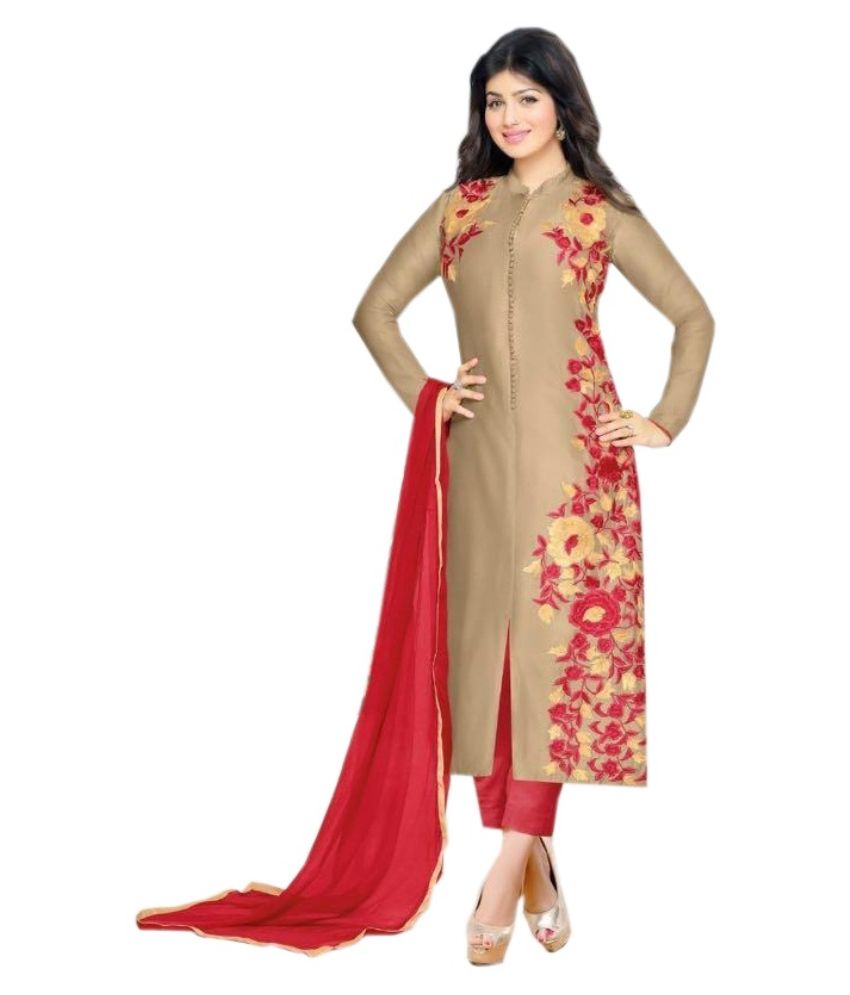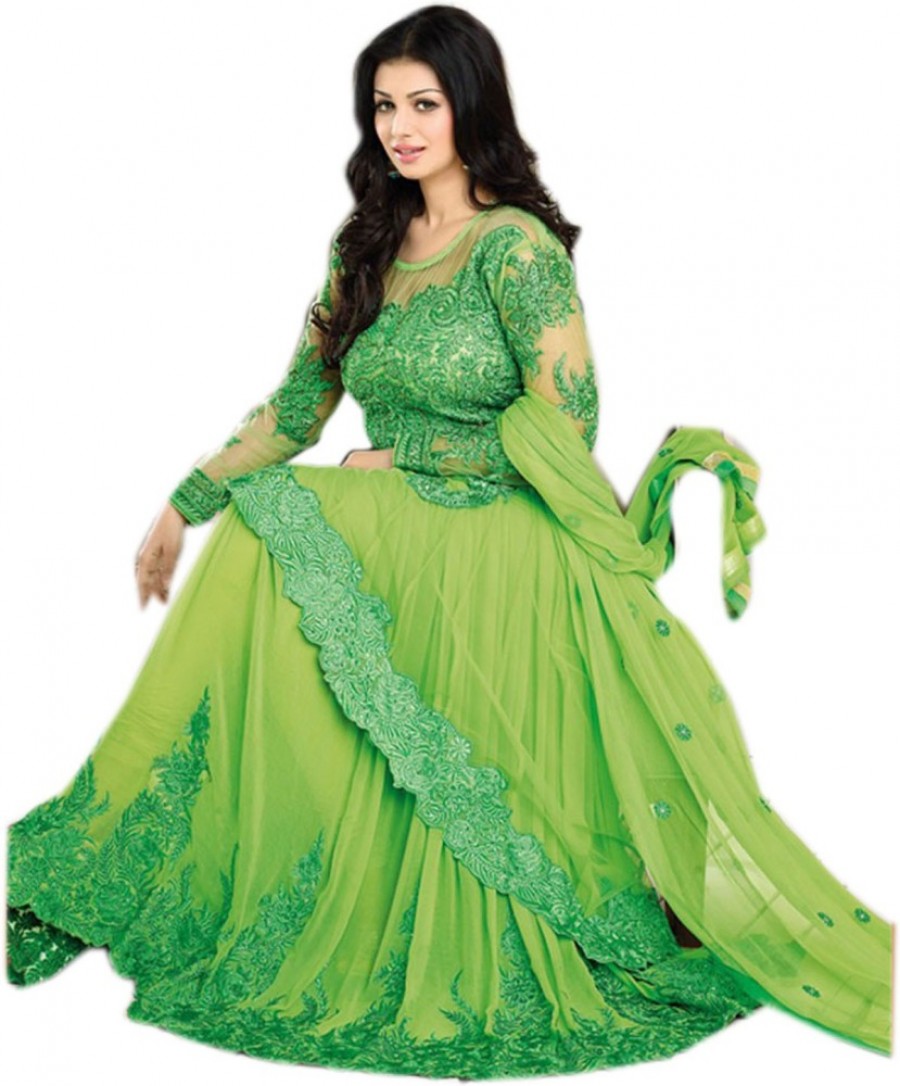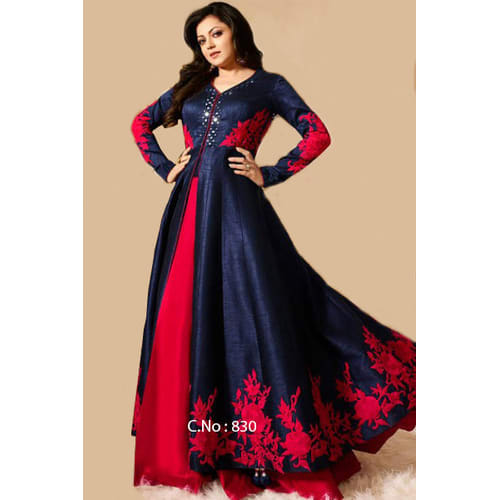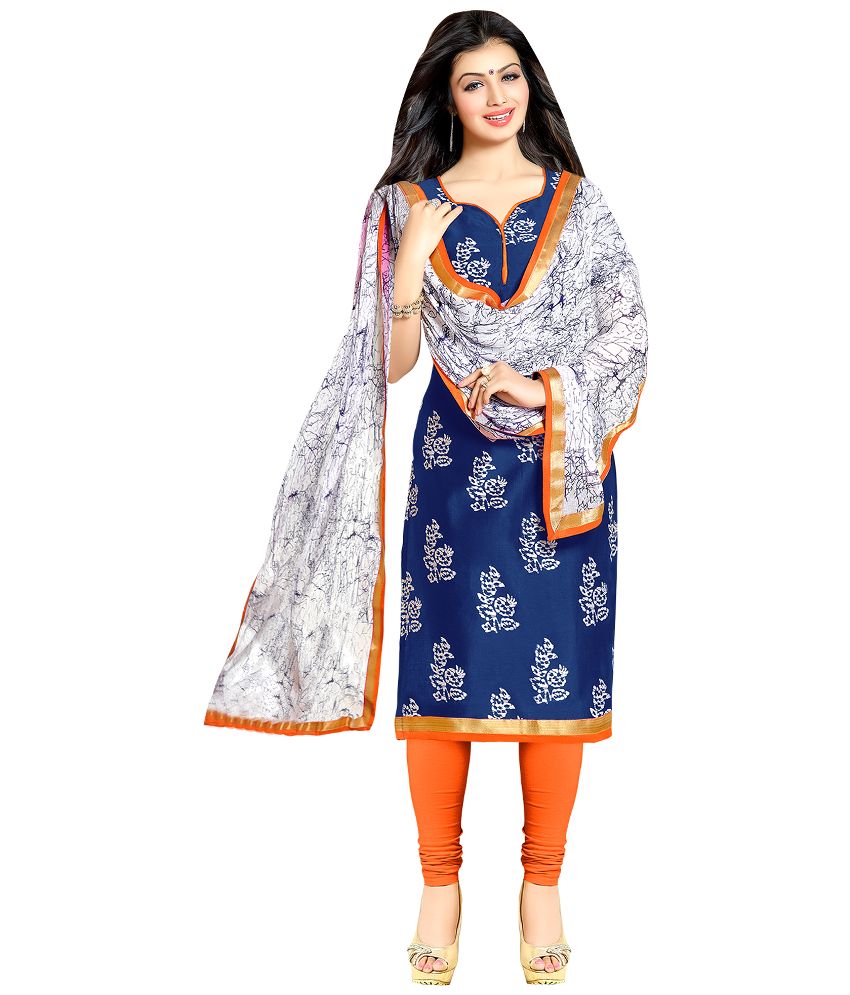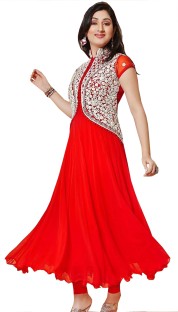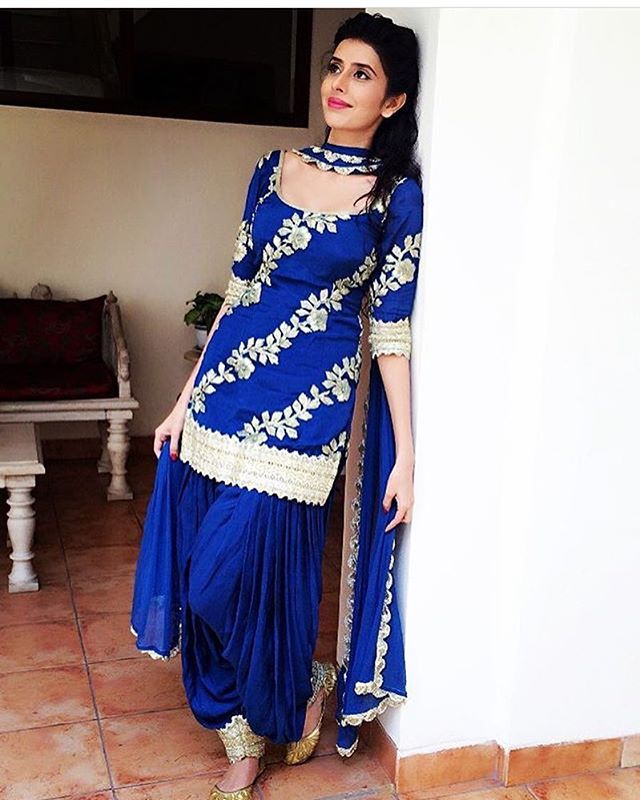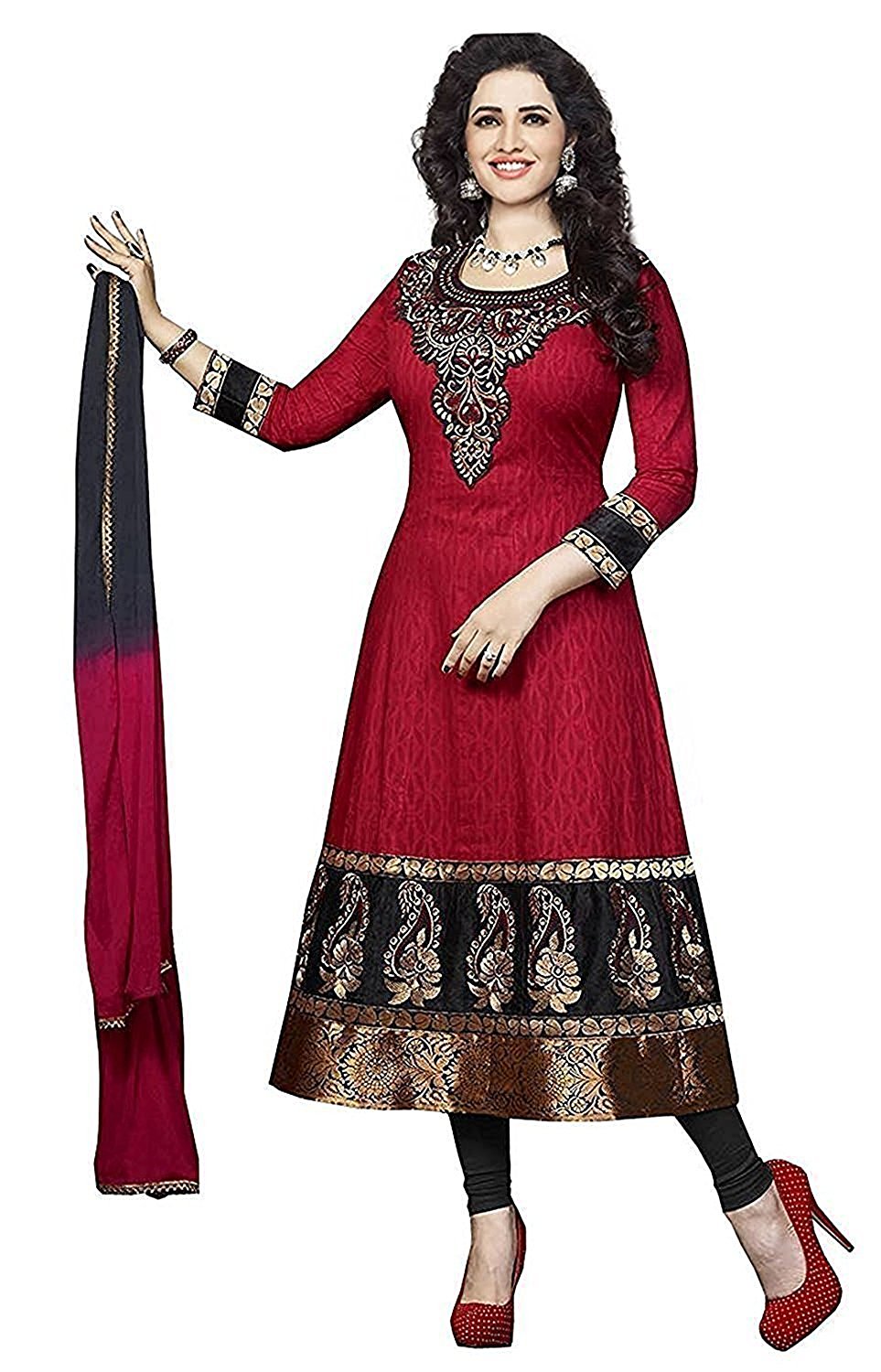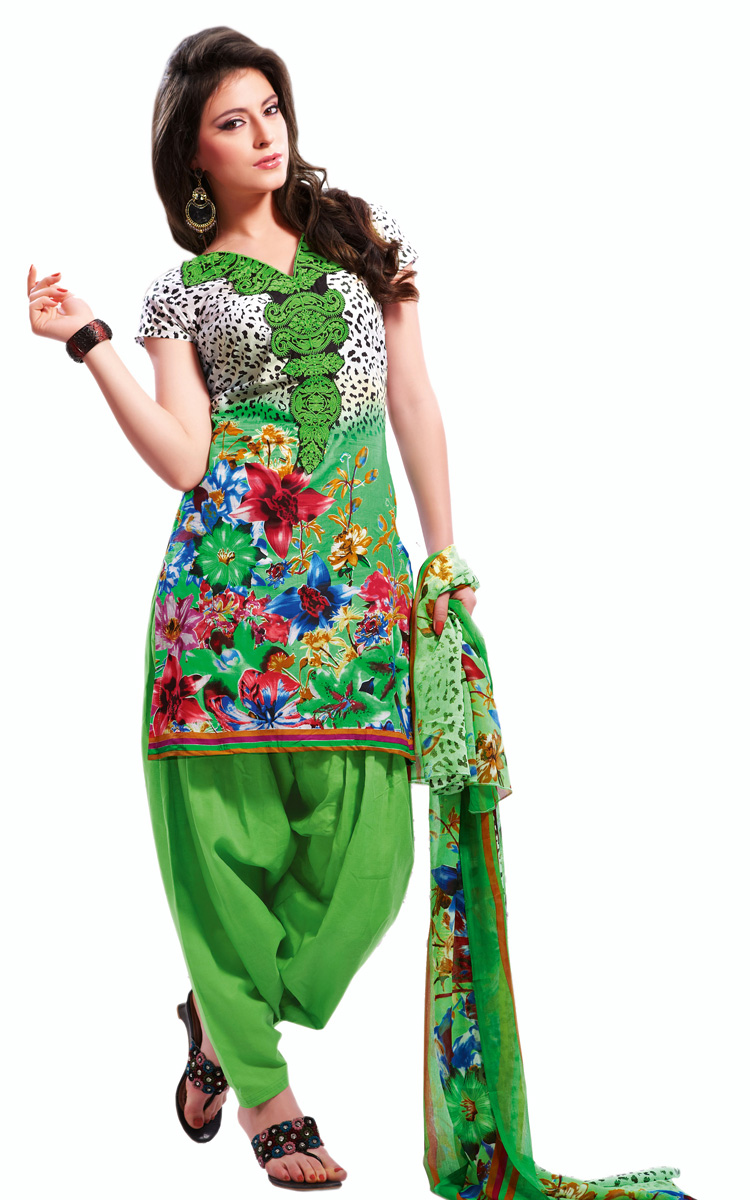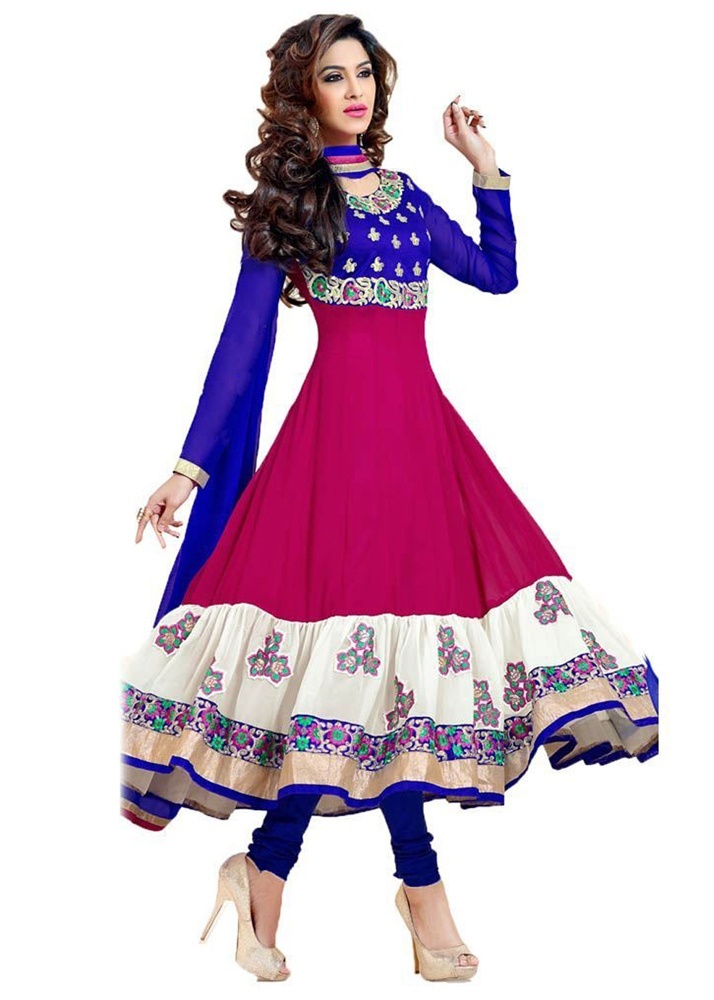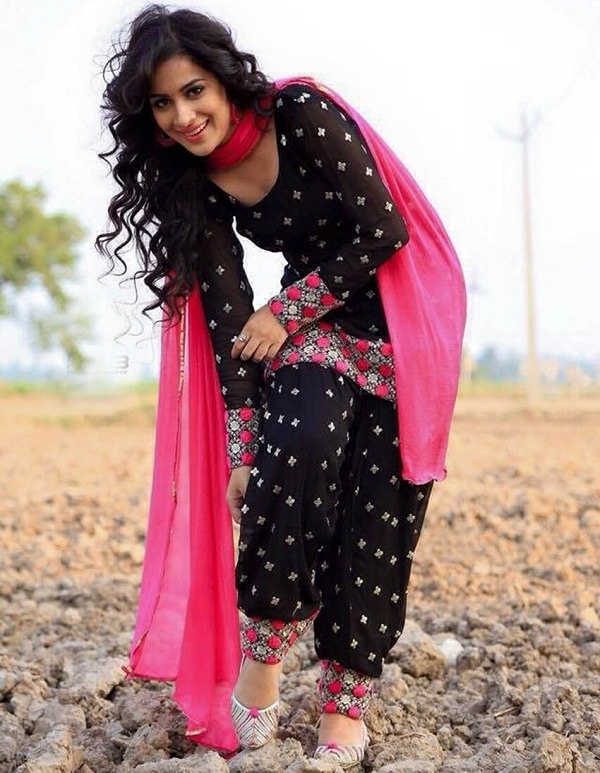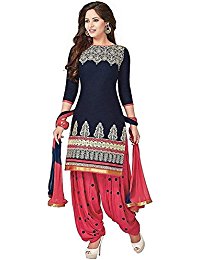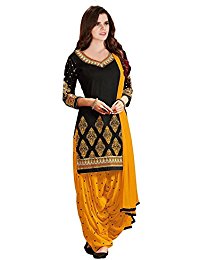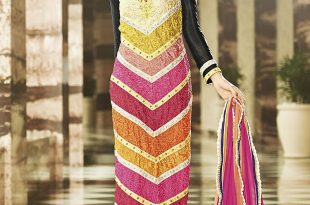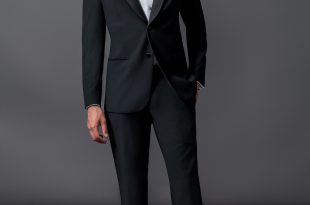Salwar Suits are traditional and elegant’ attire worn by the Women in India and Pakistan. Originating from the state of Punjab in India and adjacent Pakistan, the traditional attire, also called Salwar Kameej, which have long evolved into a much modern name…. Salwar suits. Unlike the traditional Saree, these are widely preferred by working women, as it gives flexibility, at the same time one can stick to tradition and ethnicity.
The suite comprises of three parts:
- Covering the upper body – the Kurti or blouse,
- Covering the lower part, the Salwar or trouser,
- Dupatta is a stole, basically worn around the neck.
The three parts are designed with a combination of contrasting colours, shapes and the embroidery-works or prints, to make a final niche.
Salwar suits, though adapted in many forms, originates from some basic styles. They may be classified as follows:
- Patiala: The style worn by the Kings of Patiala. The kurti is body-fitted running till the knees, with side-slits down from the waist. The salwar is baggy style, with pleats starting from the waist, ending in folds behind the legs.
- Churidar : The trouser is leg-hugging but forms folded rings below the knees till the ankle. This is complemented with more flarey and longer kurta or even the normal Kurta. This is favorite with young girls.
- Anarkali: Most elegant form of Salwar Suits, with intricate needle works. The bottom is like Churidar. But the top becomes flowy and long down from the waist, designed with embroidery and sparkling bids and pearls.
- salwar suits buy khantil net embroidered semi stitched salwar suit dupatta material online VWJOCZZ
- salwar suits nitya madhubala blue salwar suit – 830 EQMAOAN
- salwar suits quick view UVBBXXB
- salwar suits quick view UHTQSJE
- salwar suits we care creation embroidered kurta u0026 churidar ABSICRM
- salwar suits 25+ best ideas about salwar kameez on pinterest | indian wear, indian ethnic wear WYKDPZP
- salwar suits globalia creation womenu0027s cotton salwar suit set (gol-02334e112_dark_free size) CHNALKS
- salwar suits shopping for apparels online. versace suitsarmani suitsdesigner salwar … LROESFZ
- elegant u0026 designer – salwar suits by surat tex (pick any 1) – homeshop18.com STZGMQG
- salwar suits black embroidered patiala salwar suit ZGPFZAI
- salwar suits womenu0027s cotton patiala semi-stitches salwar suit YSSLIQY
- salwar suits texstile womenu0027s faux cotton salwar suit (fd_tsp-4_black_blackfree size) VDEQZSV
 boloblog.com Outfit ideas and latest fashion trends
boloblog.com Outfit ideas and latest fashion trends
